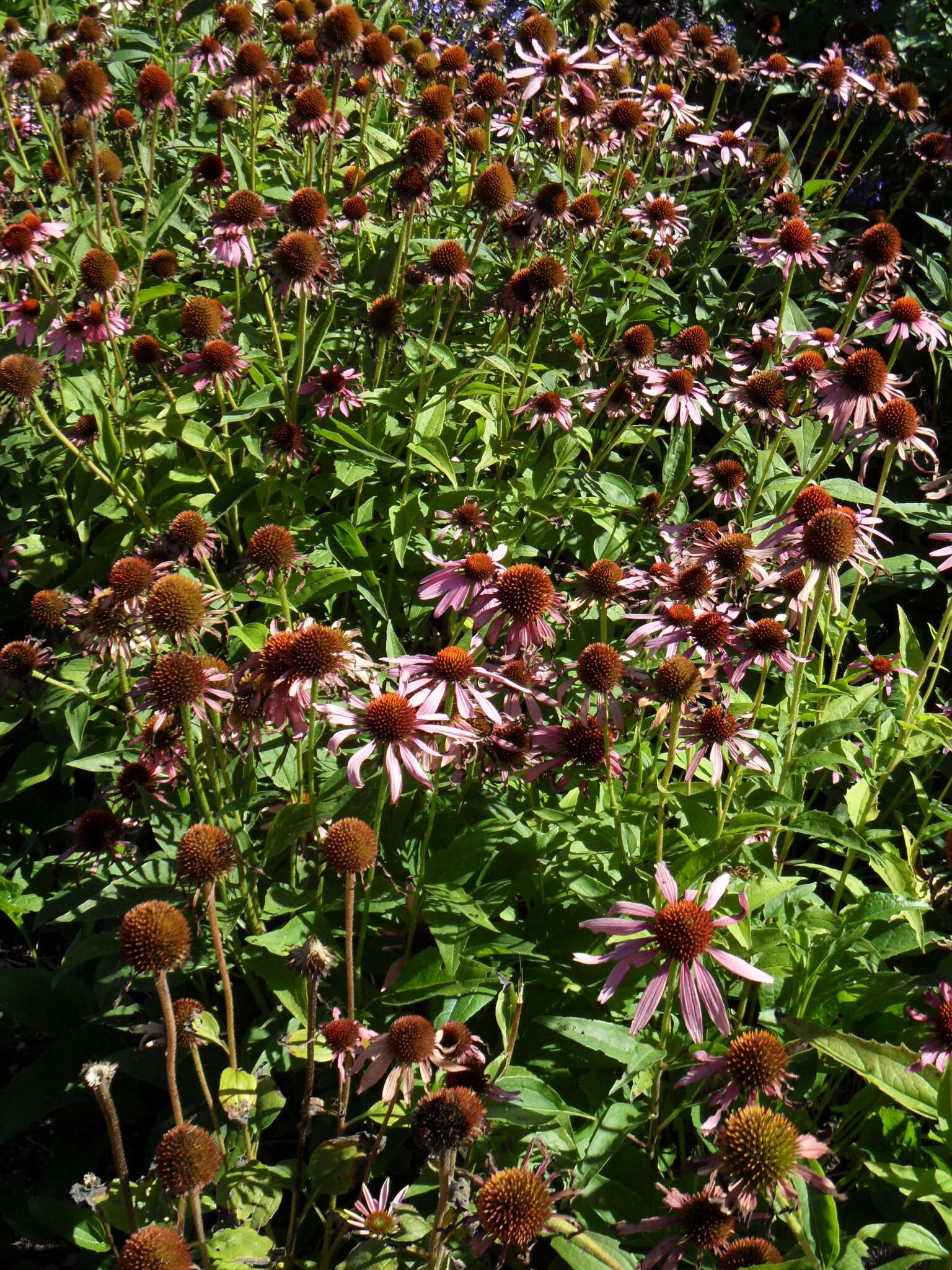
Greek echinos — hedgehog, an allusion to the spiny receptacle scales.
Perennial herbs, rhizomatous, glabrous to hairy. Stems erect, little-branched. Leaves basal and along stems, alternate, margins entire to toothed, petiolate or sessile. Capitula radiate, terminal, solitary or a few together, with stalks. Involucral bracts in 2-4 rows, overlapping, unequal. Receptacle with long spiny scales, conical. Ray florets sterile, ligulate, drooping, rose pink, to purple, sometimes yellow or white. Disk florets bisexual, tubular, yellowish or purplish. Achenes cylindrical or 4-angled, glabrous or hairy on angles. Pappus a short cup or crown of scales.
In 1999-2000 Echinacea was the most popular natural medicine. Native to N America, its use can be traced back to the American Indians for whom it provided many medicinal remedies. The expressed juice of aerial parts of E. purpurea is now used for the treatment of infections of the respiratory and urinary tract and root extracts of E. pallida and E. purpurea in the treatment of common colds and flu.
Spiny receptacle scales longer than disk florets.
9 species from the USA.
Bauer (1998).
Source: (2002). Dahlia. In: . Horticultural Flora of South-eastern Australia. Volume 4. Flowering plants. Dicotyledons. Part 3. The identification of garden and cultivated plants. University of New South Wales Press.
